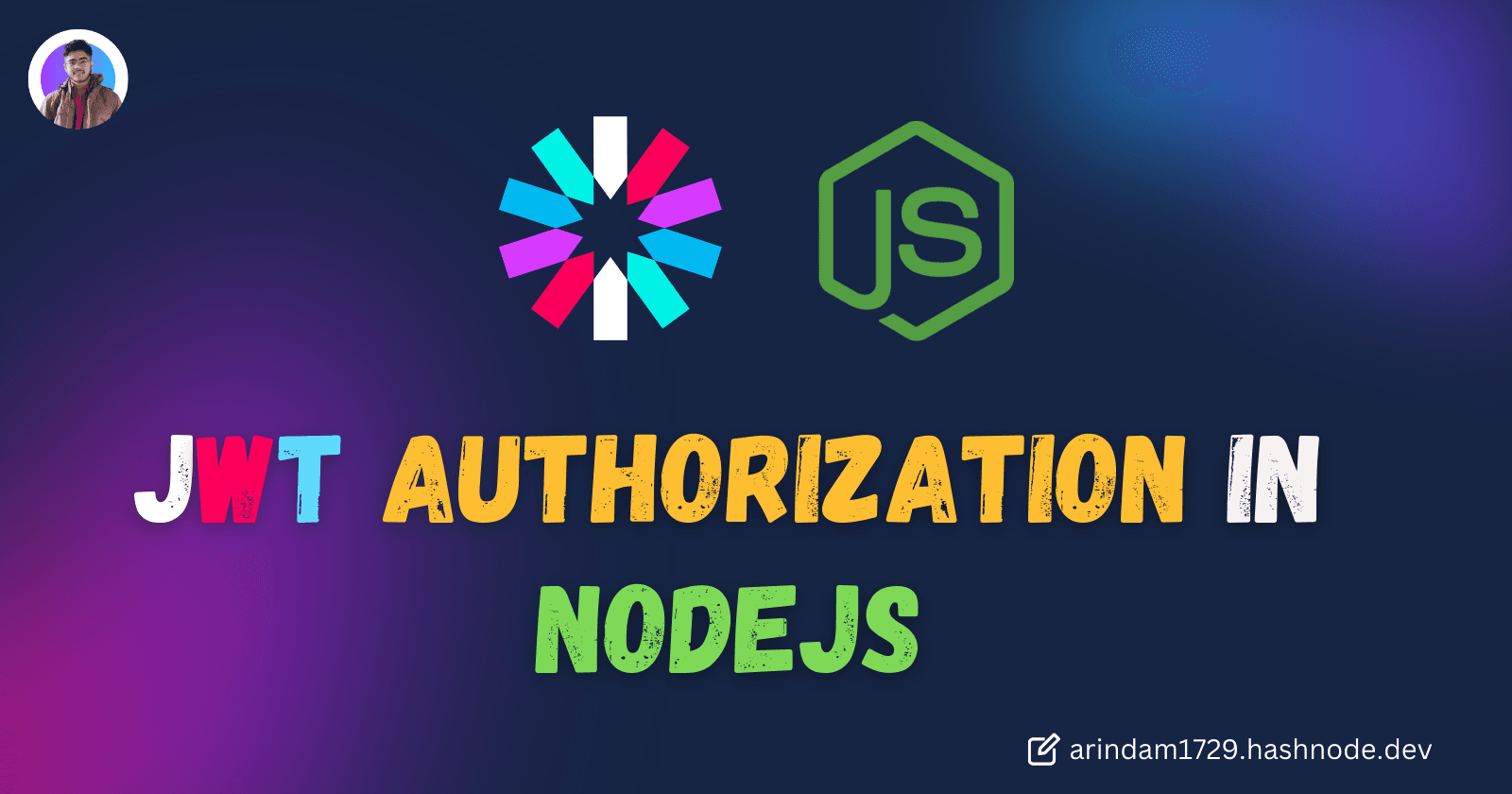Introduction:
Authentication and Authorization are two fundamental concepts in web application security. As we build web applications, ensuring that only the right users can access certain parts of our site is crucial to security. This is where authentication and authorization come into play.
In this Article, We will discuss about Authentication and authorization, and How to implement them in our Nodejs Application.
So Without Delaying any further, Let’s Start!
Understanding Authorization
What Is Authorization?
Authorization is the process of giving access to users to do specific work/actions. It decides what an authenticated user is allowed to do within the application. After Authentication, authorization makes sure that the user only does what they're allowed to do, following specific rules and permissions.
Some Common ways of Authentication are:
- Role-based access control (RBAC)
- Attribute-based access control (ABAC)
- Policy-based access control(PBAC)
How Authorization works?
The Authorization process works like this:
- The Authenticated user makes a request to the server.
- The server verifies the user and gets their assigned roles and permission.
- The server evaluates if the user has permission for the requested actions.
- If the user is authorized, the server allows the user to perform the requested actions.
- Otherwise, it denies access and returns an appropriate response.
What is Role-based Access Control (RBAC)?
Role-Based-Access Control is an access control method that gives permissions to the user based on their assigned roles within our applications. In simple words, It controls what users can do within the application.
Instead of assigning permissions to individual users, RBAC groups users into roles, and then assign permissions to those roles. This makes it easier to manage access control, as we only need to update permissions for a role, rather than for each individual user.
Key Components of RBAC are:
- Role: Defines a set of responsibilities, tasks, or functions within the application
- Permissions: Represents specific actions that users can perform.
- Role Assignments: Users are assigned to one or more roles, and each role is associated with a set of permissions.
- Access control policies: Dictate which roles can access particular resources and what actions they can take.
Implementing Authorization in NodeJS
Till Now, We have an understanding of Authentication and Authorization. Let’s explore how to implement them in our NodeJS Application.
In this section, we’ll build a simple NodeJs app and integrate Authentication and authorization functionalities.
Basic Project Setup and Authentication
To set up a basic Node.js project and add JWT authentication, you can check out the following article where I explain each step in detail:
Setting up Basic Node.js Project and Add JWT Auth
Implementing Authorization
In this Section, we’ll implement Authorization in our Nodejs App.
1. Update the User Schema:
We’ll update the User Schema and add one “role” field where we’ll define the role/scope of the user. We’ll use these roles in the later section for authorization.
const mongoose = require("mongoose");
const userSchema = new mongoose.Schema({
username: {
type: String,
required: true,
unique: true,
},
password: {
type: String,
required: true,
},
role: {
type: String,
required: true,
default: "user",
},
});
module.exports = mongoose.model("User", userSchema);2. Update the Auth Route:
Next up, we’ll update the /signup and /login routes. We’ll take the newly added role from the request body in the signup route.
// updated sign up
router.post("/signup", async (req, res) => {
try {
const { username, password, role } = req.body;
const user = new User({ username, password, role });
await user.save();
res.status(201).json({ message: "New user registered successfully" });
} catch (error) {
res.status(500).json({ message: "Internal server error" });
}
});In the login route, just like username and password validation, we’ll also validate the role of the user.
// Updated Login route
router.post("/login", async (req, res) => {
const { username, password, role } = req.body;
try {
const user = await User.findOne({ username });
if (!user) {
return res.status(401).json({ message: "Invalid username or password" });
}
if (user.password !== password) {
return res.status(401).json({ message: "Invalid username or password" });
}
if (user.role !== role) {
return res.status(401).json({ message: "Invalid role" });
}
// Generate JWT token
const token = jwt.sign(
{ id: user._id, username: user.username, role: user.role },
process.env.JWT_SECRET,
);
res.json({ token });
} catch (error) {
res.status(500).json({ message: "Internal server error" });
}
});3. Create Admin Validation middleware:
Now, we’ll create a middleware that validates if the user is an admin or not.
function verifyAdmin(req, res, next) {
if (req.user.role !== "admin") {
return res.status(401).json({
message: "Access denied. You need an Admin role to get access.",
});
}
next();
}
module.exports = verifyAdmin;4. Create Admin route:
After that, We’ll create an admin route in our main index.js to validate whether the user has admin access.
// index.js
const adminMiddleware = require("./middleware/admin");
app.get("/admin", userMiddleware, adminMiddleware, (req, res) => {
const { username } = req.user;
res.send(`This is an Admin Route. Welcome ${username}`);
});5. Testing Endpoints:
In the signup route, we’ll create a new user with an Admin role.
For that, we’ll make a POST request to http://localhost:3000/auth/signup with the following body:
{
"username": "Arindam Majumder",
"password": "071204",
"role": "admin"
}And the New User is registered. Our updated signup quote is working correctly.
Similarly, In the Login Route, we’ll make a get the token of the new user.
For that, we’ll make a GET request to http://localhost:3000/auth/login with a similar body:
{
"username": "Arindam Majumder",
"password": "071204",
"role": "admin"
}And We’ll get a Token like this:
Now, we’ll test our admin route. For that, we’ll make a GET request to http://localhost:3000/admin with this Body:
{
"username": "Arindam Majumder",
"password": "071204",
"role": "admin"
}This Time we also have to add one authorization header and add the token there to authenticate our user.
Authorization = USERS_JWT_TOKEN;And we’ll get the following response:
That means our Endpoints are working as expected.
With that, We have successfully implemented Authorization in our NodeJs Application.
Conclusion
Overall, Authentication and Authorization are very important in modern-day Web applications.
In this article, we covered the basics of Authentication and Authorization and How to integrate them into the NodeJs Application.
Hope you found this helpful. Don’t forget to share your Feedback on the Comments.
Happy Coding!


